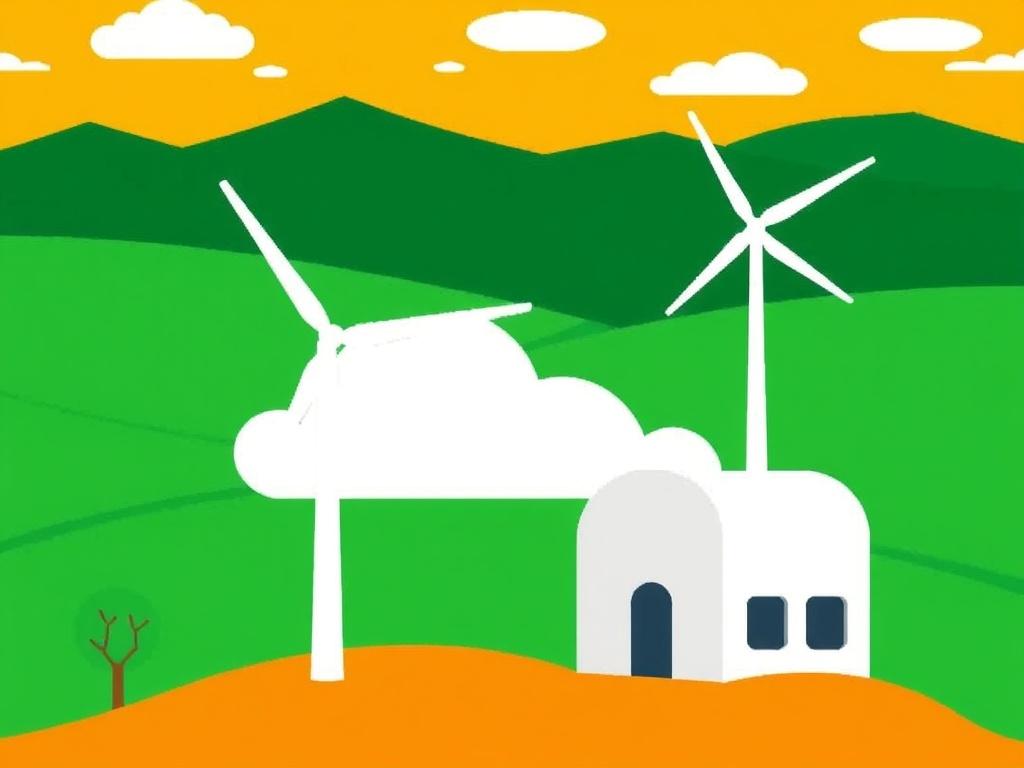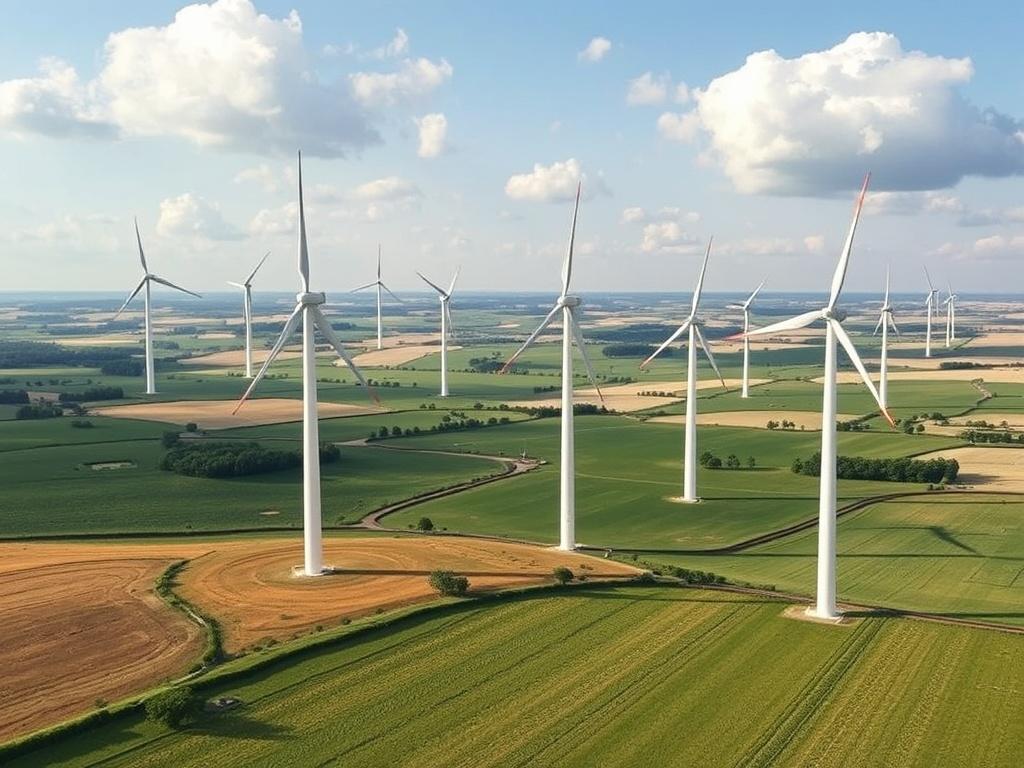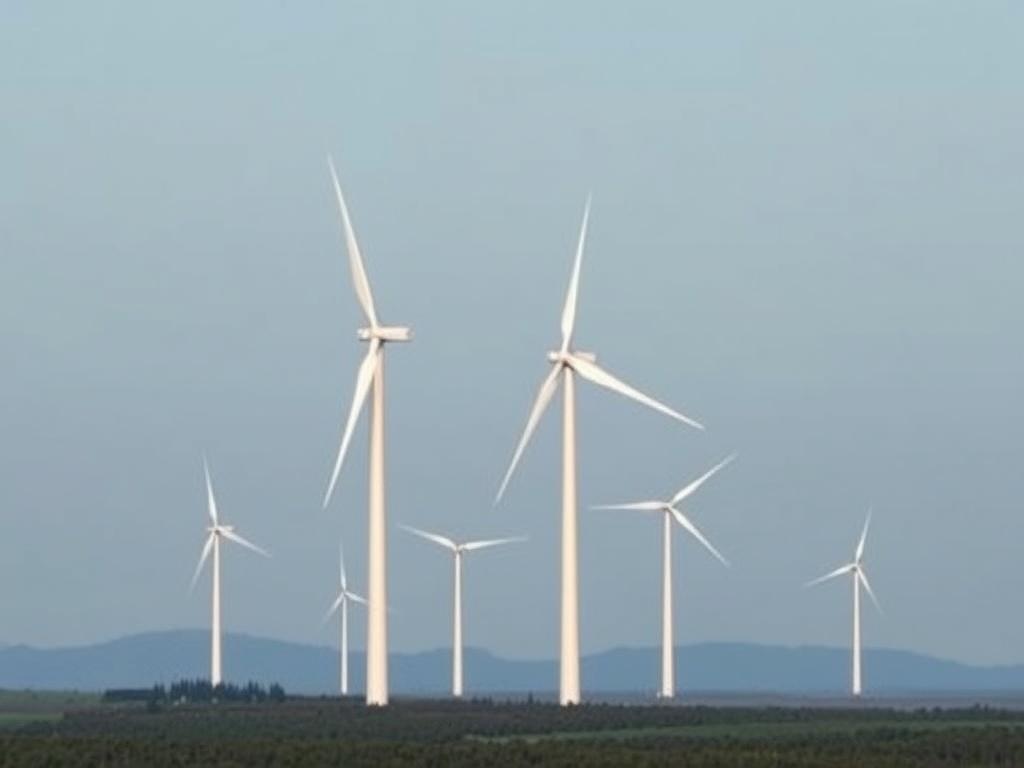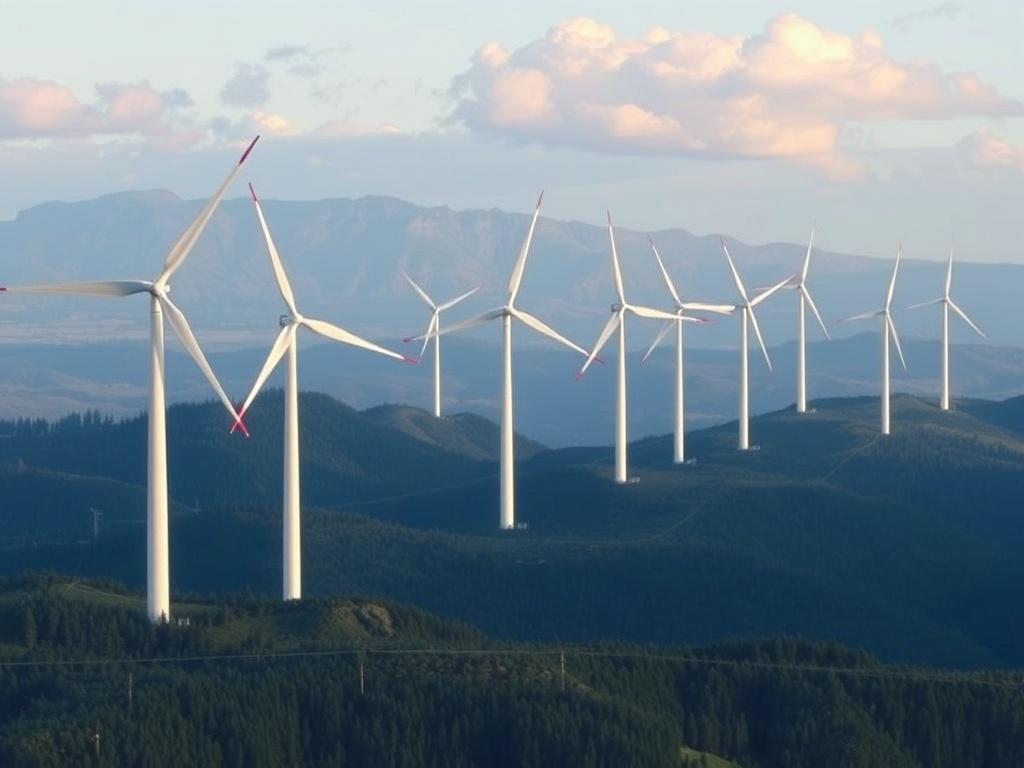- The Rise of Corporate Renewable Energy Initiatives
- Why Wind Farms? The Appeal of Wind Energy for Amazon
- Key Benefits of Wind Energy for Corporate Use
- Amazon’s Wind Farm Projects: A Closer Look
- The Role of Power Purchase Agreements (PPAs)
- Amazon’s Renewable Energy Goals and Wind Farms’ Contribution
- Wind Farm Investment vs Other Renewable Options
- Community Impact and Environmental Benefits
- Key Environmental Metrics Associated with Wind Farm Use
- The Challenges Amazon Faces in Wind Farm Expansion
- Summary of Key Challenges
- The Future of Amazon’s Wind Farm Investments
- Upcoming Trends in Corporate Wind Energy Investment
- Amazon’s Wind Farm Story: What It Means for the Planet
- Conclusion
In recent years, Amazon has made significant strides towards achieving its sustainability goals, with a particular focus on renewable energy. Among its most ambitious projects are investments in wind farms—large-scale arrays of wind turbines that convert wind energy into electricity. But why is Amazon so invested in wind energy, and how are these investments shaping the company’s environmental footprint? In this article, we will unravel the intricacies of Amazon’s wind farm investments, explaining their importance, how they work, and what this means both for Amazon and the wider global push toward green energy.
The Rise of Corporate Renewable Energy Initiatives

Before we delve into the specifics of Amazon’s wind farm investments, it’s essential to understand the broader context. Corporations worldwide are increasingly embracing renewable energy as a way to reduce carbon emissions and meet climate pledges. These initiatives are spurred by a combination of regulatory pressures, consumer expectations, and the recognition that sustainability and profitability can go hand-in-hand. The technology behind wind energy, including advanced turbines and grid integration strategies, has matured significantly, making such investments more viable and attractive to businesses with large energy footprints.
For Amazon, which operates massive data centers, warehouses, and logistics networks around the world, energy consumption is enormous. This has inspired the company to shift towards renewable sources to power its operations and ensure a sustainable future for its business and the planet.
Why Wind Farms? The Appeal of Wind Energy for Amazon
Wind energy presents several advantages that have made it a preferred choice for Amazon’s renewable investments. Unlike solar energy, which depends on sunlight and daylight hours, wind farms can generate electricity around the clock as long as there is sufficient wind. This makes wind an excellent complementary energy source to other renewables, trading off variability issues and enhancing energy reliability.
Moreover, wind farms, particularly those located onshore and offshore in windy regions, can produce large amounts of clean energy at a relatively low cost once the infrastructure is in place. By investing in wind farms, Amazon is able to claim a scalable and impactful step toward reducing carbon emissions, with tangible returns in energy output.
Key Benefits of Wind Energy for Corporate Use
- Consistent and scalable energy production even during non-daylight hours
- Competitive cost of electricity generation compared to fossil fuels
- Significant reduction in greenhouse gas emissions
- Positive brand association with sustainability efforts
- Contribution to local job creation and economic development
Amazon’s Wind Farm Projects: A Closer Look
Amazon has embarked on numerous wind farm projects globally, ranging from onshore wind farms in the United States to offshore projects in Europe. These investments are often made through long-term power purchase agreements (PPAs) or direct investments in developing wind farms. Let’s explore some notable examples:
| Project | Location | Capacity (MW) | Type | Contribution to Amazon’s Renewable Goals |
|---|---|---|---|---|
| Amazon Wind Farm Texas | Scurry County, Texas, USA | 253 | Onshore | Supplies clean energy equivalent to powering over 70,000 homes |
| Amazon Wind Farm Fowler Ridge | Indiana, USA | 150 | Onshore | Supports Amazon’s U.S. data centers with renewable energy |
| Offshore Wind Farm in Denmark | North Sea, Denmark | 100+ | Offshore | Part of Europe’s renewable push, supports Amazon’s European operations |
The Role of Power Purchase Agreements (PPAs)
One of the main mechanisms Amazon uses to invest in wind farms is the Power Purchase Agreement. But what exactly is a PPA, and why is it so important?
A PPA is a contract between an energy buyer (Amazon) and a renewable energy project developer, wherein the buyer agrees to purchase electricity at a fixed rate for a set period, often 10-20 years. This arrangement provides financial certainty to the wind farm project, making it easier to secure funding and proceed with construction. For Amazon, PPAs guarantee access to renewable power at predictable costs, supporting both environmental and financial objectives.
Amazon’s Renewable Energy Goals and Wind Farms’ Contribution
Amazon’s investments in wind farms are part of a broader commitment to achieve net-zero carbon emissions by 2040, ten years ahead of the Paris Agreement goals. The company has also pledged to power its operations with 100% renewable energy by 2025. To put this in perspective, Amazon’s wind farm portfolio alone accounts for nearly 50% of this renewable energy capacity.
By investing in wind farms, Amazon is not only reducing its own carbon emissions but also stimulating the growth of clean energy infrastructure worldwide. This approach helps stabilize the renewable energy market and encourages further innovation in wind technology and energy storage solutions. It also underscores Amazon’s leadership role in the corporate sustainability arena.
Wind Farm Investment vs Other Renewable Options
| Energy Source | Amazon’s Investment Level | Advantages | Challenges |
|---|---|---|---|
| Wind Energy | High | High capacity factor, complementarity with solar, cost-effective | Site-specific, intermittent depending on wind patterns |
| Solar Energy | Moderate | Abundant resource, scalable, falling costs | Dependent on daylight, weather variability |
| Hydropower | Low | Reliable, mature technology | Limited by geography, environmental impact concerns |
Community Impact and Environmental Benefits
Amazon’s wind farm investments are not only about powering the company’s operations. They also bring significant benefits to local communities and ecosystems. Construction and maintenance of wind farms create jobs, boost local economies, and provide infrastructure improvements in often rural areas. Additionally, replacing fossil fuel electricity with wind energy dramatically lowers air pollution and greenhouse gases, contributing to cleaner air and better public health.
Furthermore, Amazon’s commitment to sustainable practices often includes environmental assessments and community engagement, helping to minimize potential adverse effects such as noise or wildlife disruption. Working alongside stakeholders, the company aims to find a balance between clean energy goals and social responsibility.
Key Environmental Metrics Associated with Wind Farm Use
- Reduction in carbon dioxide (CO2) emissions (measured in metric tons/year)
- Decreased reliance on coal and natural gas power plants
- Lower air pollutants including sulfur dioxide (SO2) and nitrogen oxides (NOx)
- Preservation of water resources by avoiding water-intensive fossil fuel extraction
The Challenges Amazon Faces in Wind Farm Expansion
Despite the many advantages of wind energy and the ambitious scale of Amazon’s investments, the journey is not without challenges. Site selection for wind farms requires extensive analysis of wind patterns, land availability, environmental impacts, and grid connection feasibility. Regulatory approvals can also be complex and time-consuming. Some projects face local opposition related to aesthetics or concerns over wildlife, particularly bird and bat populations.
On the technological side, integrating large volumes of intermittent wind power into the energy grid demands robust storage solutions and smart grid management. Amazon continuously explores innovations in battery storage and hybrid renewable systems to overcome these hurdles and ensure stable energy supply continuity.
Summary of Key Challenges
- Variable wind conditions and intermittency
- Land and space requirements for large wind farms
- Regulatory hurdles and permitting delays
- Environmental and community concerns
- Technological integration with existing grid systems
The Future of Amazon’s Wind Farm Investments
Amazon’s commitment to wind energy is unlikely to slow down anytime soon. In fact, the company aims to enlarge its portfolio across diverse geographies, tapping into offshore wind farms and emerging markets. The continued decline in turbine manufacturing costs, combined with technological breakthroughs like taller turbines and enhanced aerodynamics, promises more efficient and cost-effective projects.
Additionally, Amazon is leveraging data analytics and artificial intelligence to optimize energy procurement and usage patterns, ensuring the company gets the most out of its renewable investments. Collaborations with governments and energy providers will also play a pivotal role in overcoming infrastructural limitations and expanding wind energy capacity.
Upcoming Trends in Corporate Wind Energy Investment
- Greater focus on offshore wind farms near urban centers
- Integration of wind energy with energy storage and grid innovations
- Enhanced use of PPAs with flexible and dynamic terms
- Increasing use of hybrid renewable systems combining wind and solar
- Stronger community partnerships and sustainability certifications
Amazon’s Wind Farm Story: What It Means for the Planet

Amazon’s wind farm investments are a shining example of how corporate action can drive real environmental change. By committing billions of dollars to wind energy projects, Amazon is actively reducing reliance on fossil fuels, decreasing carbon emissions, and setting a precedent for other companies to follow. These wind farms are tangible symbols of progress in the fight against climate change, showing how businesses can align profitability with planet-friendly practices.
Moreover, Amazon’s leadership encourages policy support for renewable energy and helps accelerate global clean energy adoption. As wind power capacity grows worldwide, the combined impact of corporate renewable investments like Amazon’s will be critical in shaping a sustainable energy future for the decades to come.
Conclusion

Amazon’s investments in wind farms are a cornerstone of its ambitious strategy to transition to 100% renewable energy and reach net-zero carbon emissions by 2040. Through large-scale projects, innovative financing models like PPAs, and a focus on community and environmental stewardship, Amazon is demonstrating the power of corporate responsibility in tackling climate change. While challenges remain in site selection, technology integration, and regulatory frameworks, the benefits of wind energy—from reliable clean power to economic and ecological gains—make these investments a win-win. As Amazon continues to expand its wind farm portfolio globally, it not only shapes its own sustainable future but also inspires a broader movement toward green energy solutions. The company’s story teaches us that with vision, commitment, and innovation, corporate wind energy investments can indeed power a better tomorrow.
Как вам статья?







